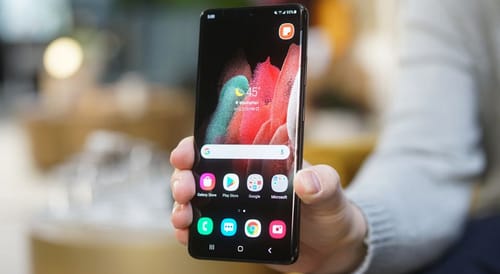 |
| Galaxy S21 Ultra is equipped with an energy efficient OLED screen |
Samsung has announced more details about the new generation of energy efficient OLED screens on the Galaxy S21 Ultra.
According to the company, the new screen is not only more efficient, but also brighter, as the new OLED screen reduces power consumption by 16% while increasing brightness, which extends battery life.
Galaxy S21 Ultra test results show that the screen is extremely bright, and battery life seems to support Samsung's claim that the screen is more efficient as well.
OLED displays use organic light-emitting diodes, and Samsung has discovered a new organic material that allows electrons to flow through the organic layer of the screen more quickly and easily.
A smartphone screen is usually one of the most energy-consuming components, so the efficiency gains here can have a big impact on a device's overall battery life.
Samsung has confirmed that the Galaxy S21 Ultra will use the LTPO display, but it is not the first phone to use the LTPO display.
According to South Korea's electronics industry media, last year Elec said the Galaxy Note 20 Ultra is also using LTPO displays, which Samsung calls HOPs.
However, this week's announcement reveals that the Galaxy S21 Ultra will be the first to adopt a more efficient display. This indicates that Samsung has improved the technology even more than the Note 20 Ultra screen.
LTPO display is already used in smart watches in smart watches because Apple Watch 4 has LG LTPO display and Samsung Watch Active 2 uses Samsung LTPO display.
Apple's upcoming flagship iPhone could benefit from Samsung's low-power screen technology.
South Korean media company Elk, which specializes in the electronics industry, said earlier this year that the South Korean company is providing LTPO displays for Apple's 2021 iPhones.
According to this report, two of Apple's four iPhones will use 120 Hz LTPO OLED displays in 2021, while the other two will use traditional OLED displays.
